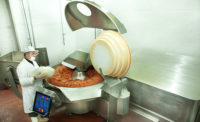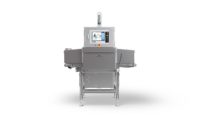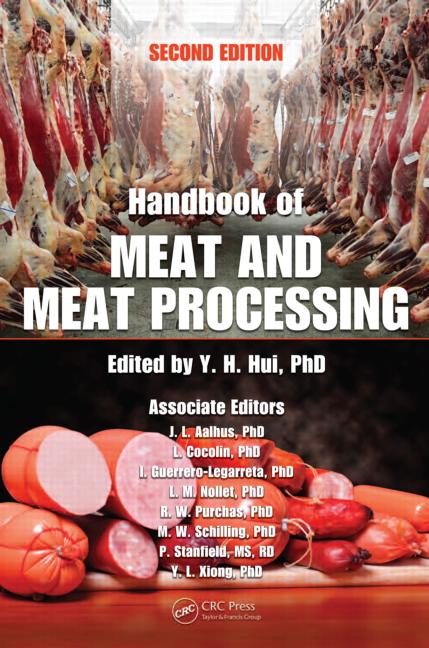Keeping tabs on the fat content in ground beef is becoming less troublesome.
While many meat and poultry processors have long used fat analysis systems to measure leanness levels, evolving technologies are making it simpler for the operators to perform readings. Elements include the ability to more easily place machines at any point of the production line to check incoming raw materials and analyze the fat and lean mix in meat products. Some systems, meanwhile, can simultaneously check for foreign objects in the meat along with conducting fat measurements.
Having accurate readings of fat levels in ground beef is essential if processors are to maximize revenues and maintain the trust of foodservice customers and consumers, analyst state. The fat-to-lean listings on retail packages are typically the average measurements of the varying meat types in the products.
“You want to ensure that the product is consistent every time and that burgers which are supposed to be 80 percent lean are not 84 or 85, or even 74 or 75, as that can result in the processors basically giving money away,” says Jamie Schweid, president and chief executive officer of Schweid and Sons, a Carlstadt, N.J.-based ground beef purveyor.
He notes processors follow a mathematical formula when developing products with a specific leanness target by combing beef items with different levels of fat to reach the leanness objective. Getting to 80/20, for instance, can result in combining meats that have fat percentages in the 50s, 70s and 90s, he says.
“In our business, there is no consistent formulation and many ways to produce ground beef that is 80/20,” Schweid says. Methodologies often are dependent on customers’ specifications governing the types of meats processors use for specific products, he says. When processors run 1,800 pounds of meat through an analyzer, for instance, the technologies pinpoint the fat-to-lean ratio of each piece and will adjust meat combinations on the fly to hit the goal, he says. “It is creating more consistency on the lean and fat trim coming from the packer community,” Schweid says.
A potentially big payback
Technologies that analyze the fat content in meats are “largely accurate,” he says, noting that flaws typically result from human error, such as failure to correctly calibrate a machine or putting 90/10 labels on packages in which the fat-to-lean ratio might actually be 75/25. “That is not prevalent, however, because consumers would know and complain about such mistakes as the extra grease and fat that will accumulate in their cooking pans or grills,” he says.
Meat quality, meanwhile, can suffer when purveyors incorrectly identify leanness levels. The subsequent adding or subtracting of fat to rectify the problem can result in overworking the grinds, Schweid says.
Because inline ground meat analyzers can cost more than $300,000, the technology will become more widespread when prices decline, he says.
“The larger processors have more to gain by investing in the technologies compared to the smaller companies that are not producing as much ground beef,” Schweid says. “Those developing 100 million pounds of ground beef every year can save significant amounts of money” by ensuring their pricing is indeed for the stated leanness levels, he says. Operators processing 10,000 to 20,000 pounds of grinds annually typically will use less sophisticated fat analyzers that may not be as accurate, he notes adding, that smaller processors’ clients may not be as demanding for exact measurements as some of the larger retail customers and foodservice distributors.
“Inline fat analysis and sorting brings considerable value to larger facilities, although an experienced and keen eye at the plant will likely remain a necessity to ensure consistency in fat content,” says John Tarpoff II, vice president of beef at Niman Ranch, a Westminster, Colo.-based supplier of beef, pork and lamb products.
He says technologies that pinpoint fat-to-lean levels have improved in recent years and notes Niman Ranch conducts leanest tests at its plants for every individual combination of beef it uses in grinds. A third party frequently tests and re-calibrates its analysis equipment to ensure accuracy. NP










